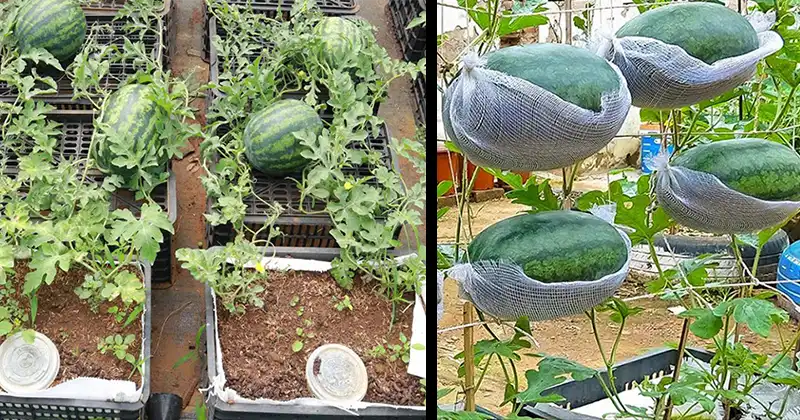
Watermelons are a refreshing and delicious summer fruit that can be grown even in small spaces like containers. Whether you have a small patio, balcony, or limited garden space, you can enjoy the sweet taste of home-grown watermelons. In this article, we will give you a step-by-step guide on how to grow watermelons in containers.
1. Choose the right container:
Choosing the right container is crucial to growing watermelons successfully. Opt for a large, deep container with at least 5 gallons of capacity. Make sure it has drainage holes to avoid waterlogging.
2. Choose the right watermelon variety:
Not all watermelon varieties are suitable for container gardening. Look for compact or shrub-like watermelon varieties that are specifically bred for smaller spaces. Some good options include Sugar Baby, Bush Sugar Baby and Golden Midget.
3. Prepare the soil:
Use a high-quality potting soil that is well-drained and rich in nutrients. You can also enrich the soil with compost to improve its fertility. Fill your container with soil, leaving a few inches free at the top so you can water it more easily.
4. Planting watermelon seeds or transplants:
You have two options for planting watermelons in containers:
A. Seeds: Plant seeds about 1 inch deep, following spacing recommendations on the seed packet.
B. Transplanting: You can start watermelon seeds indoors and transplant them into the container once they have a few leaves. Alternatively, you can purchase young watermelon plants from a local nursery.
5. Ensure sufficient sunlight:
Watermelons need plenty of sunlight to thrive, so place your container in a location that will receive at least 6-8 hours of direct sunlight each day.
6. Irrigation:
Watermelon plants need consistent moisture, especially during the growing season. Water deeply, but be careful not to overwater, as this can cause root rot. Check moisture levels by sticking your finger in the soil. Water when the top inch feels dry.
7. Fertilization:
Feed your container-grown watermelon with a balanced slow-release fertilizer or a water-soluble fertilizer with a higher phosphorus content to encourage flowering and fruit production. Follow the product’s directions for use.
8. Pruning and training:
Watermelon vines can get quite long and unruly. You can help control their growth by gently training them to grow vertically on a trellis, stakes, or even hammocks. This saves space and allows for better air circulation, reducing the risk of disease.
9. Pollination:
Watermelons require pollination for fruit development. If you grow watermelons on a balcony or in a location with few pollinators, you may need to pollinate the plant by hand. Gently transfer the pollen from the male to the female flowers using a small paintbrush.
10. Pest and disease management:
Keep an eye out for common watermelon pests such as aphids, spider mites and cucumber beetles. If you notice an infestation, consider using organic pest control methods or insecticidal soap. Prevent disease by ensuring good air circulation and avoiding overhead watering.
11. Harvest:
Watermelons are ready to harvest when they sound hollow when tapped and their rind is dull. You can also look for a yellow spot on the bottom, which indicates ripeness. Cut the fruit from the vine with a sharp knife or scissors.
Growing watermelons in containers can be a rewarding and space-saving endeavor. With the right container, variety, soil, and care, you can enjoy the sweet taste of homegrown watermelons even in limited garden space. Follow these steps, and soon you’ll be enjoying the fruits of your labor!
